https://fldmp.com/9Rick%20Blyth%20-%20Chrome-Ext/00-Welcome!/0.1-Welcome.mp4
https://fldmp.com/9Rick%20Blyth%20-%20Chrome-Ext/00-Welcome!/0.1-Welcome.mp4 - Part 1

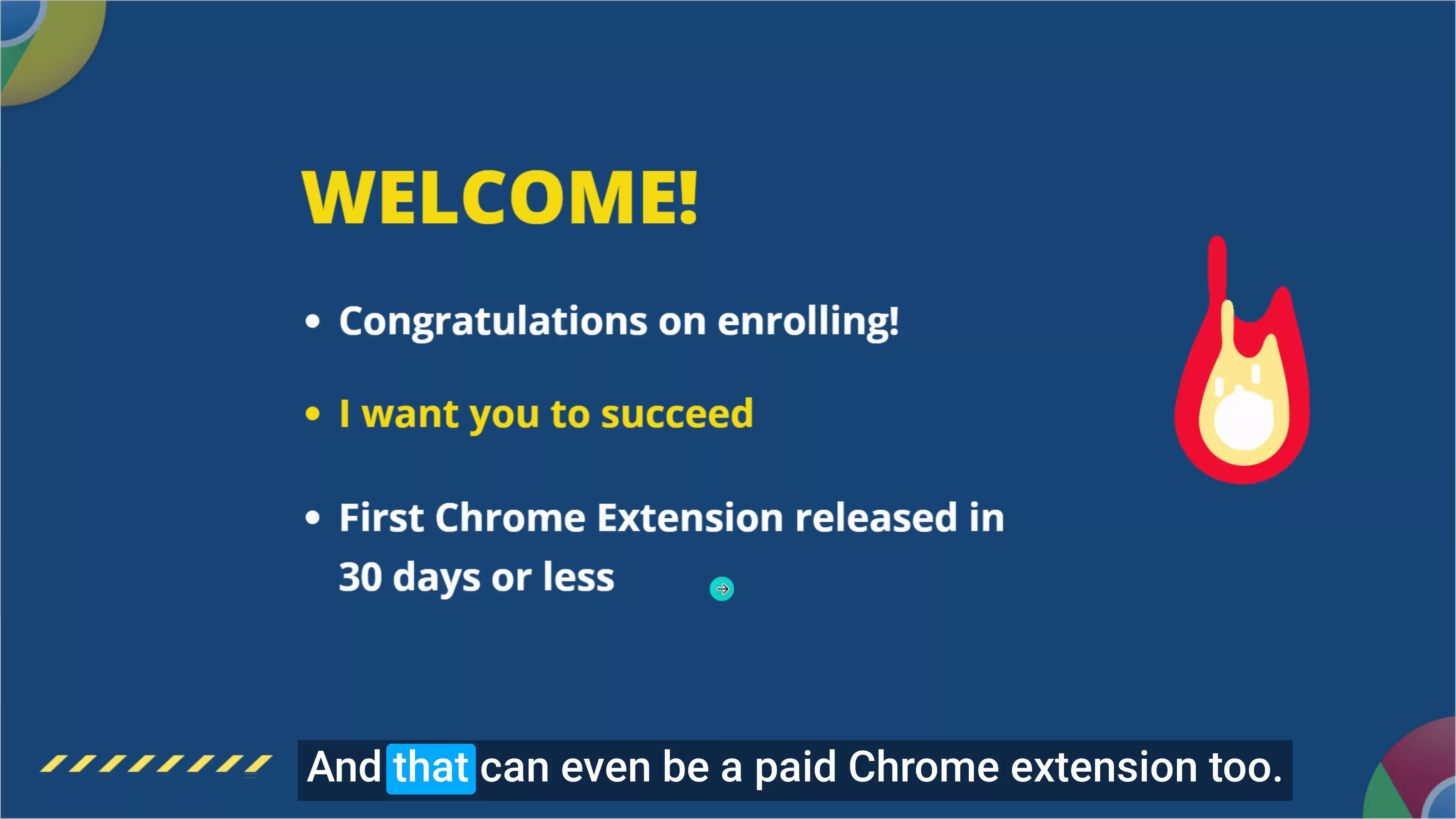
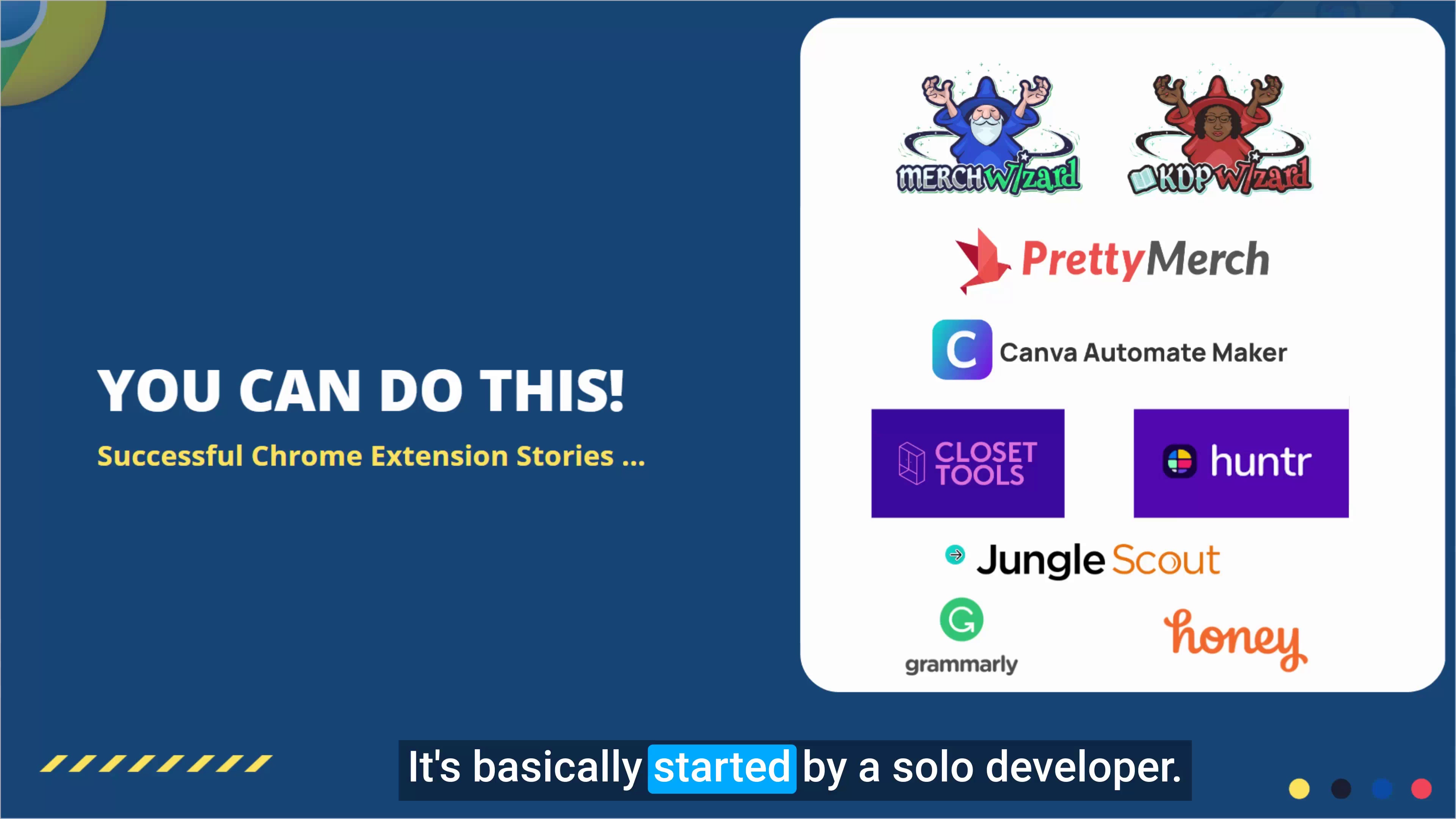
The narrator welcomes students to a course on creating profitable Chrome extensions. He encourages students to set a goal of releasing their first extension within 30 days.
Several successful Chrome extensions developed by solo developers are highlighted:
- Merch Wizard and KDP Wizard: Created by the narrator, eventually leading to a multi-six figure exit
- PrettyMerch: A successful extension in the same niche
- Canva Automation and Poshmark Automation: Extensions in different niches
- Jungle Scout: Started by a solo developer, now employs over 200 people globally
- Grammarly: A well-known writing assistance extension
- Honey: A coupon code extension that sold for $4 billion
The narrator emphasizes that students don't need to aim for billion-dollar exits. The course provides step-by-step guidance for building a profitable Chrome extension. The next lesson will cover a high-level program overview.
.https://fldmp.com/9Rick%20Blyth%20-%20Chrome-Ext/00-Welcome!/0.1-Welcome.mp4 - Part 2




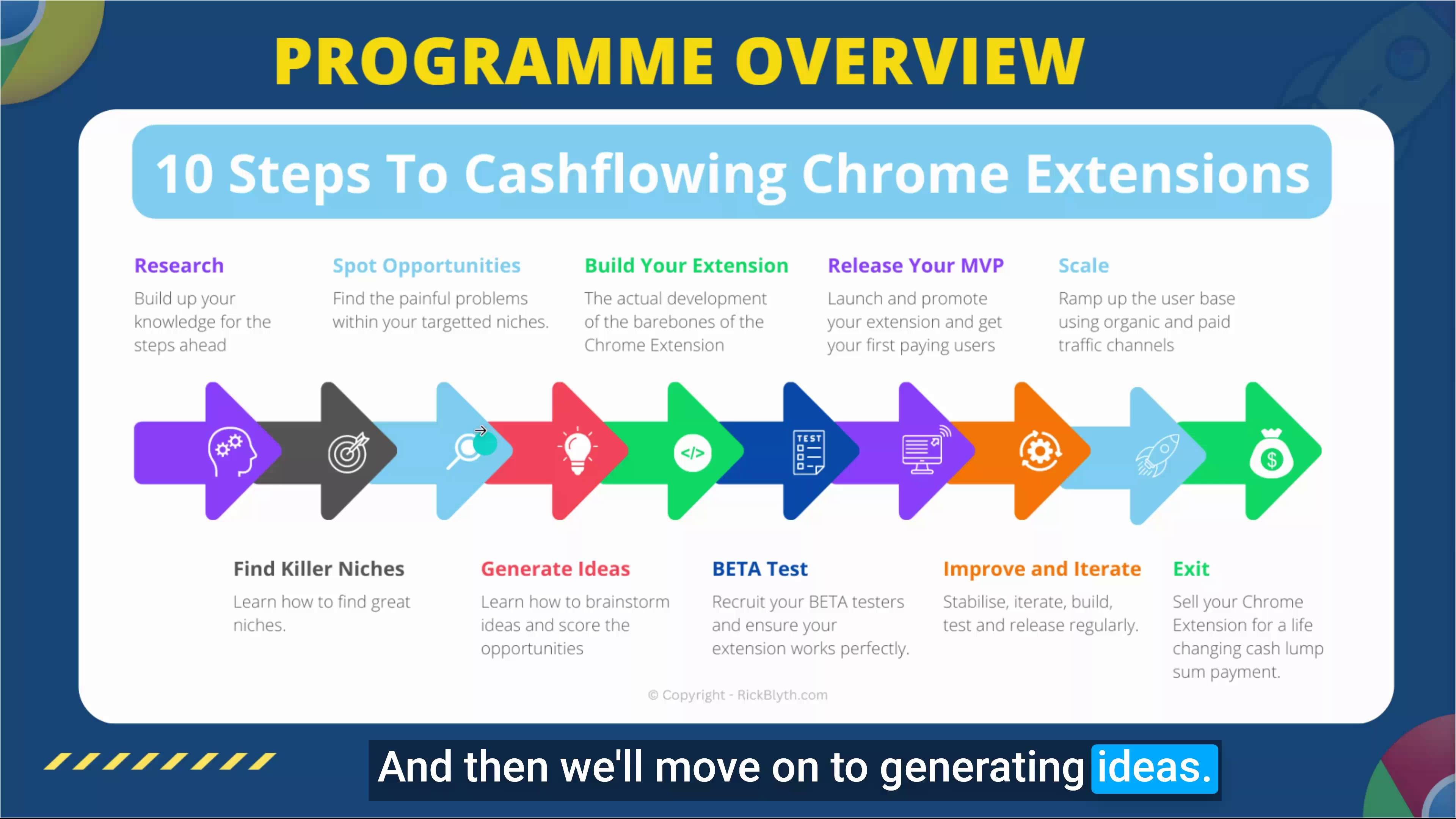
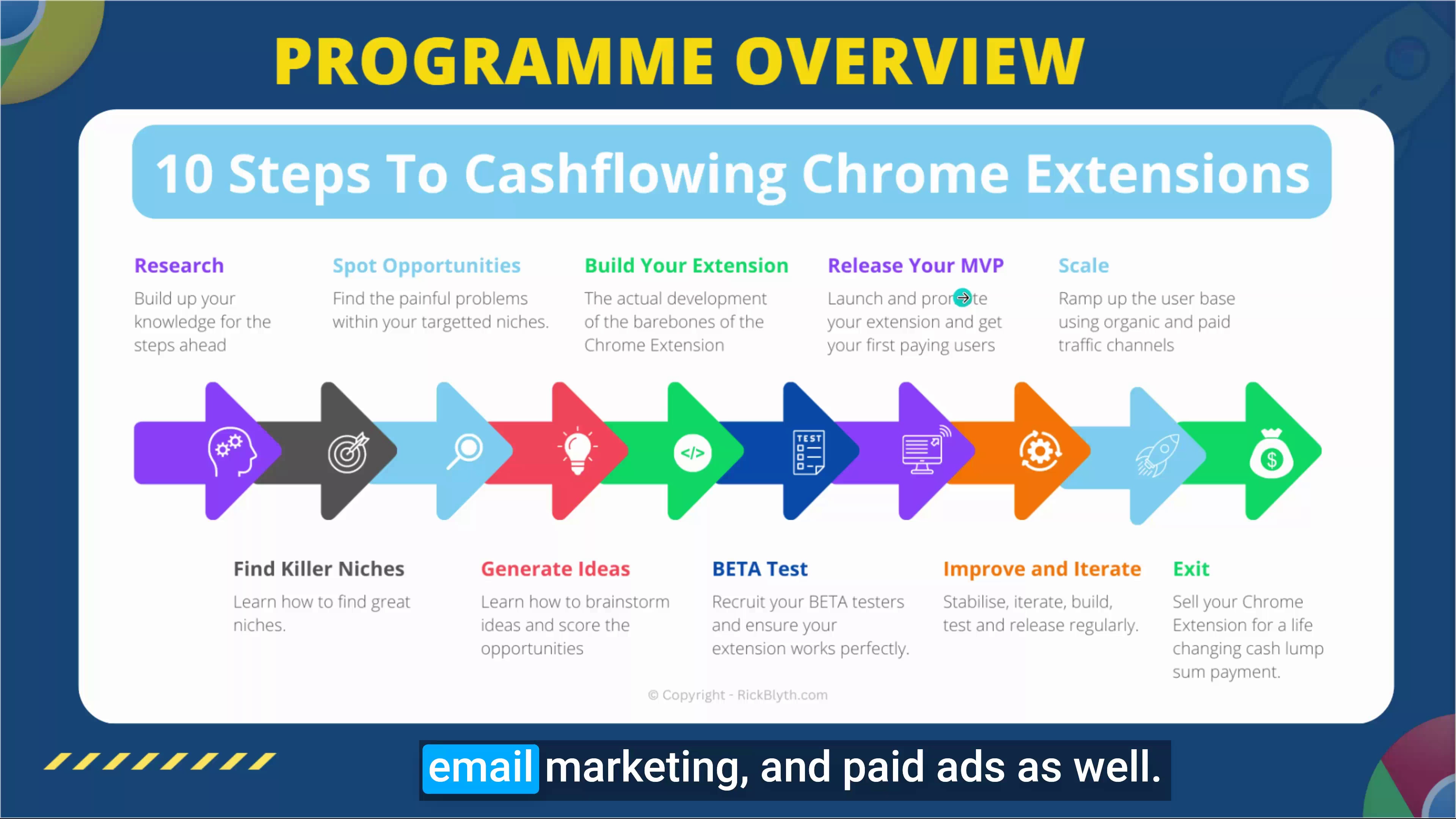
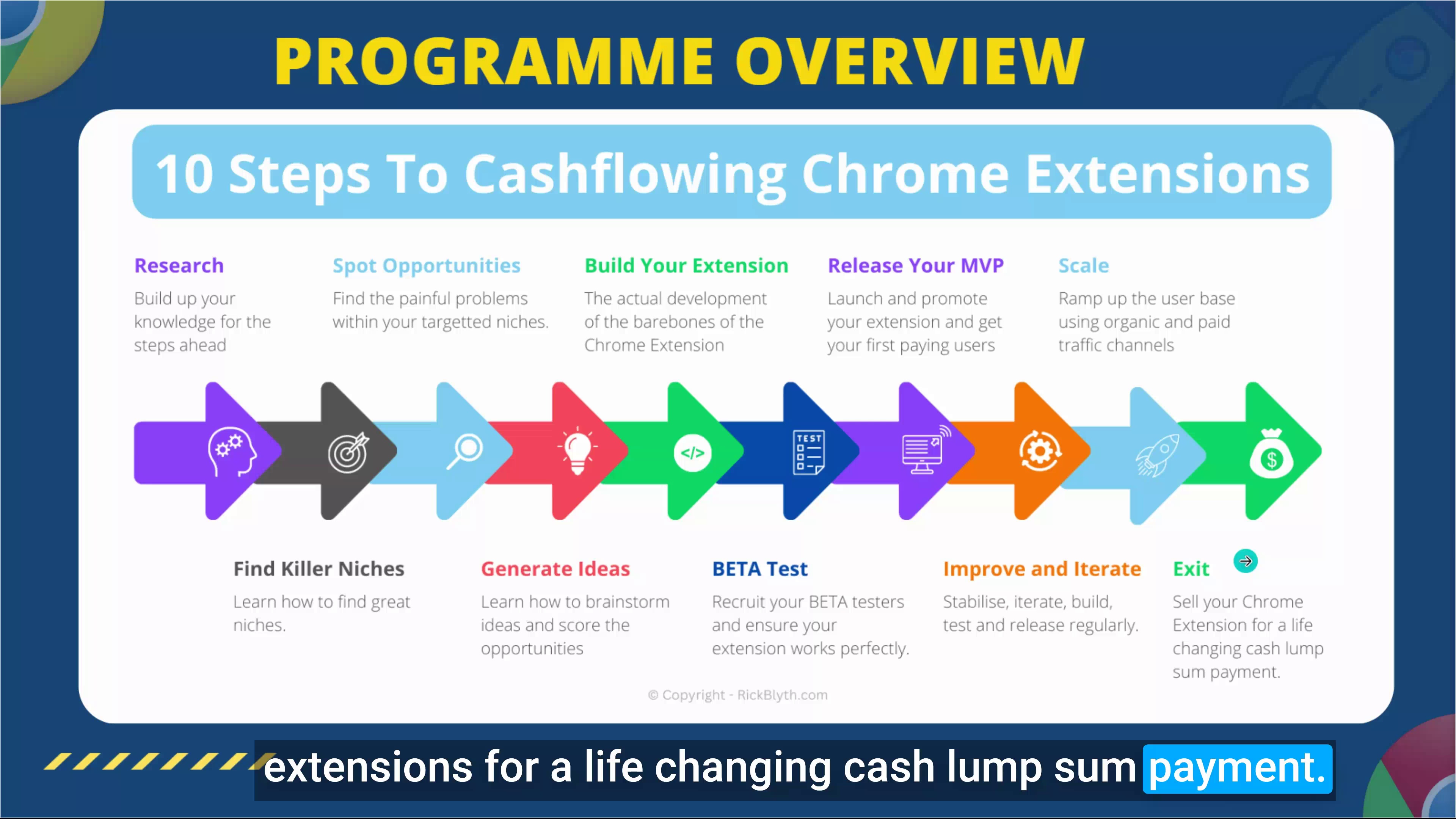
The narrator outlines a 10-step program for creating profitable Chrome extensions. The steps are:
1. Research: Learn about Chrome extension features and functionality. 2. Find niches: Identify good niches and explore niche networks. 3. Identify problems: Find painful problems to solve with extensions. 4. Generate ideas: Use seven strategies to uncover opportunities. 5. Build MVP: Create a bare-bones version of the extension. 6. Recruit beta testers: Get feedback and refine the product. 7. Release MVP: Launch and promote using organic and paid methods. 8. Add features and stabilize: Iterate, build, test, and release regularly. 9. Scale user base: Use organic promotion, paid advertising, and partnerships. 10. Exit or continue: Enjoy passive income or sell the extension business.
The narrator emphasizes the importance of not skipping the foundational work in steps 1-4. These early steps are crucial for success. After completing the process once, developers can repeat steps 2-10 to create larger, more profitable extensions.
As a bonus, the narrator mentions an upcoming lesson on a 30-day plan to reach the initial MVP stage.
.https://fldmp.com/9Rick%20Blyth%20-%20Chrome-Ext/00-Welcome!/0.1-Welcome.mp4 - Part 3







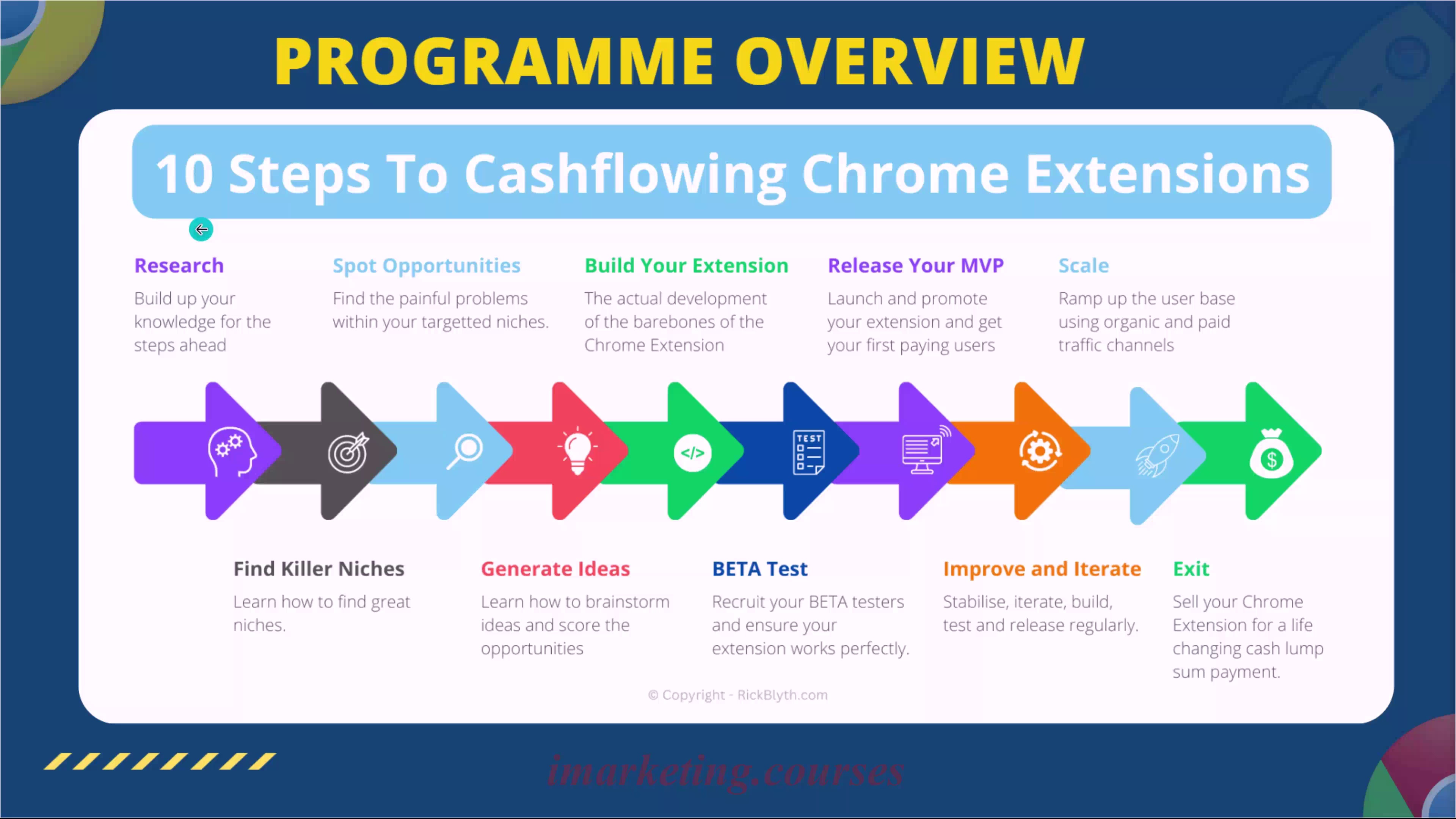
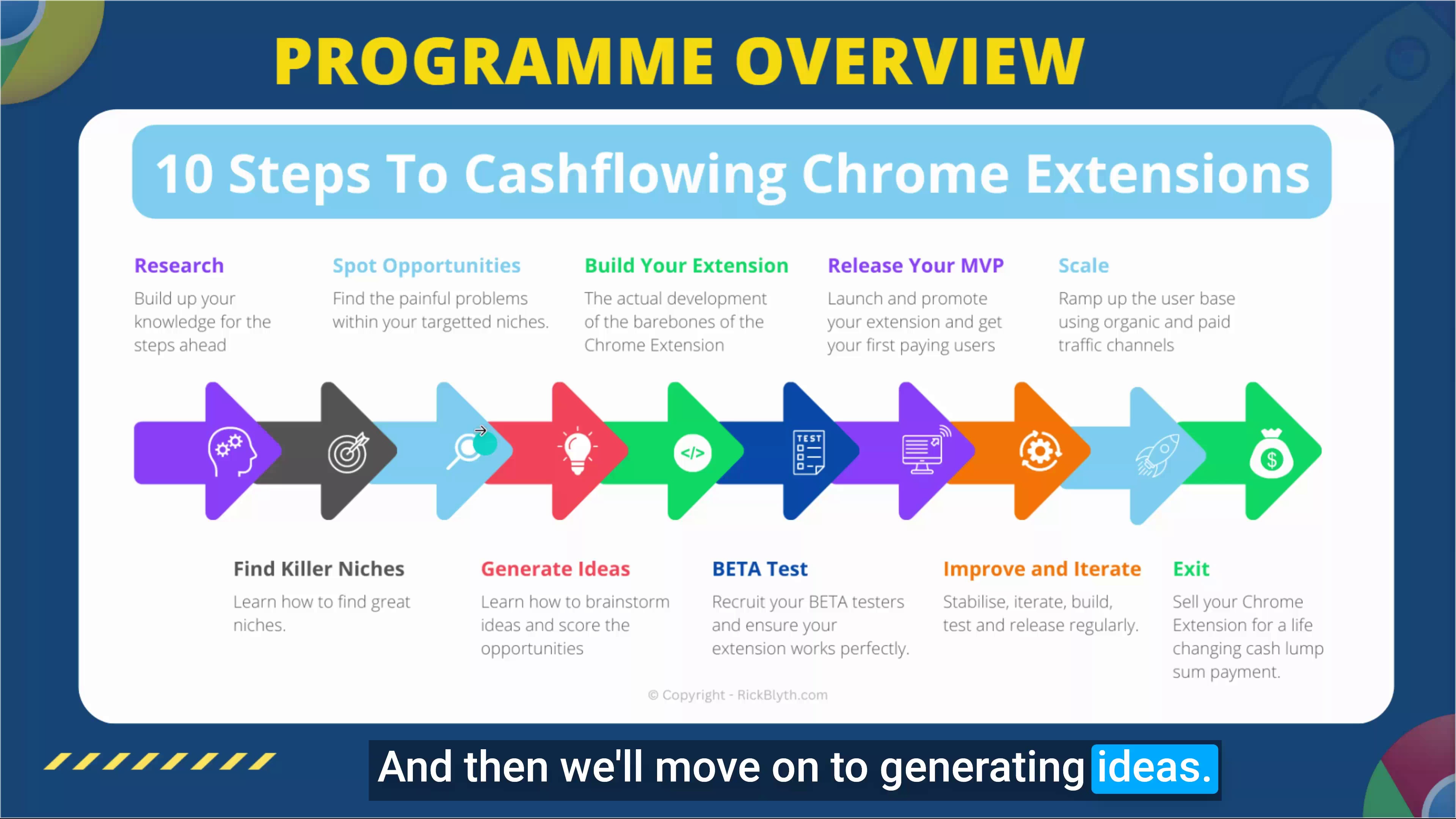
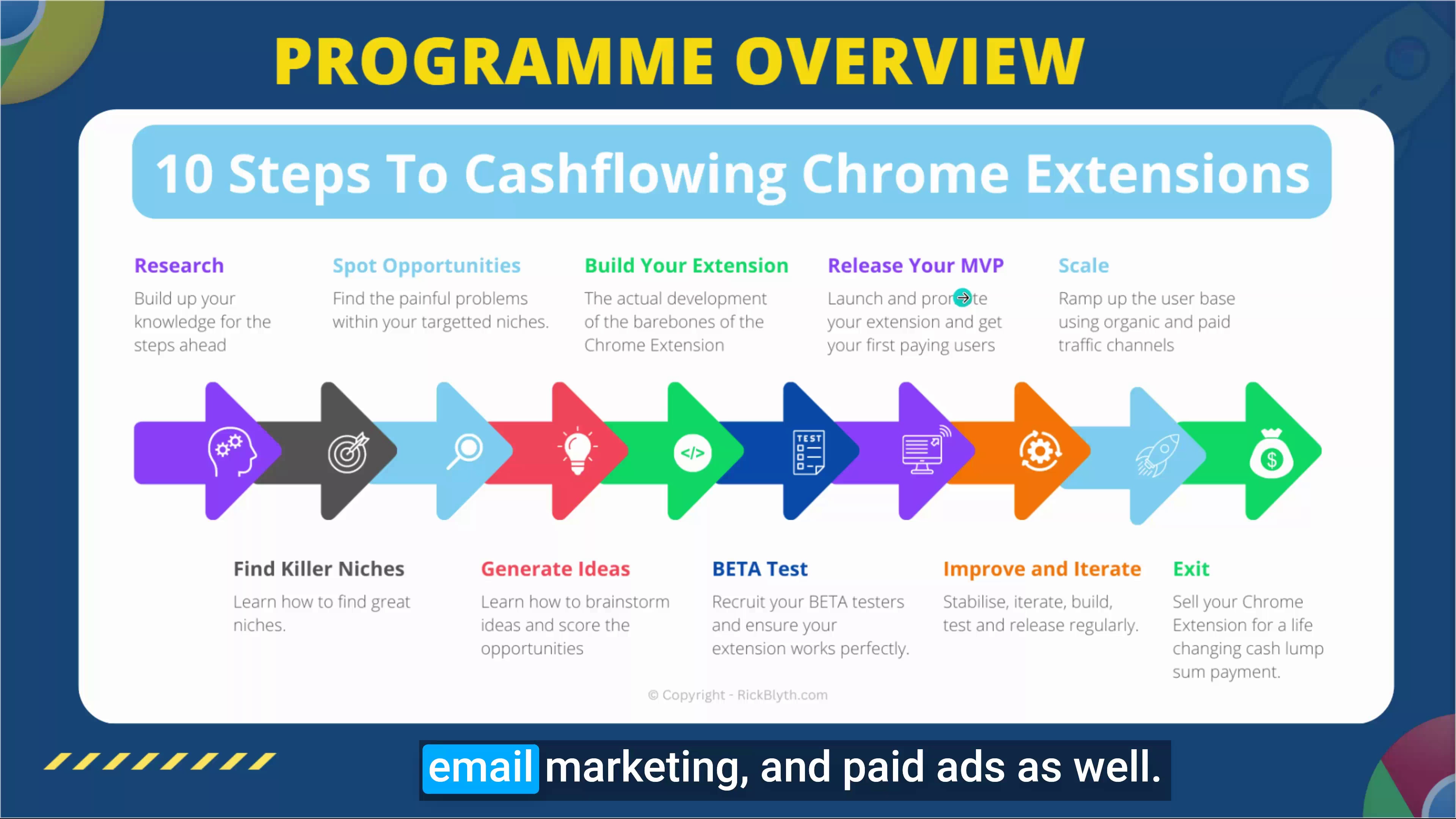
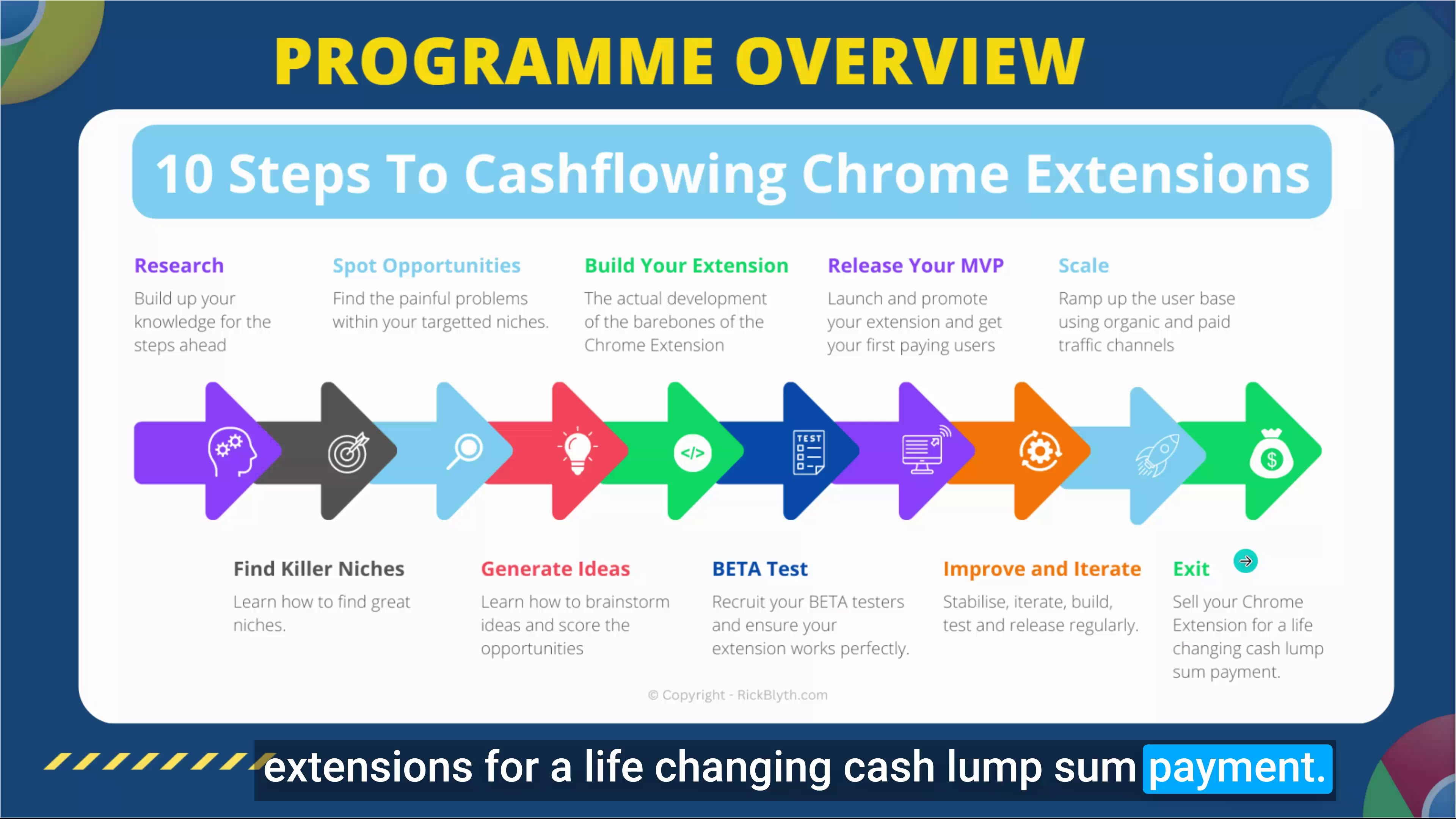
The narrator outlines 10 steps to create profitable Chrome extensions. The process begins with research, learning about Chrome extension features and functionality. Finding good niches and painful problems to solve is crucial.
Generating ideas comes next, with seven strategies to uncover opportunities. Building a bare-bones MVP version of the extension follows. Beta testers are then recruited to fine-tune the product.
The MVP is released using organic and paid promotion methods. Continuous iteration and feature addition help retain users and minimize churn. Scaling up the user base involves leveraging organic promotion, paid advertising, and partnerships.
The final step discusses exit strategies, including selling the Chrome extension business for a cash lump sum. The narrator emphasizes the importance of not skipping the foundational work in steps one to four.
As a bonus, the process can be repeated to develop larger Chrome extensions with higher income potential. The narrator advises against jumping straight into building an extension without proper research and idea validation.
A 30-day plan to reach the initial MVP stage is mentioned as the topic for the next lesson.
.https://fldmp.com/9Rick%20Blyth%20-%20Chrome-Ext/00-Welcome!/0.1-Welcome.mp4 - Part 4











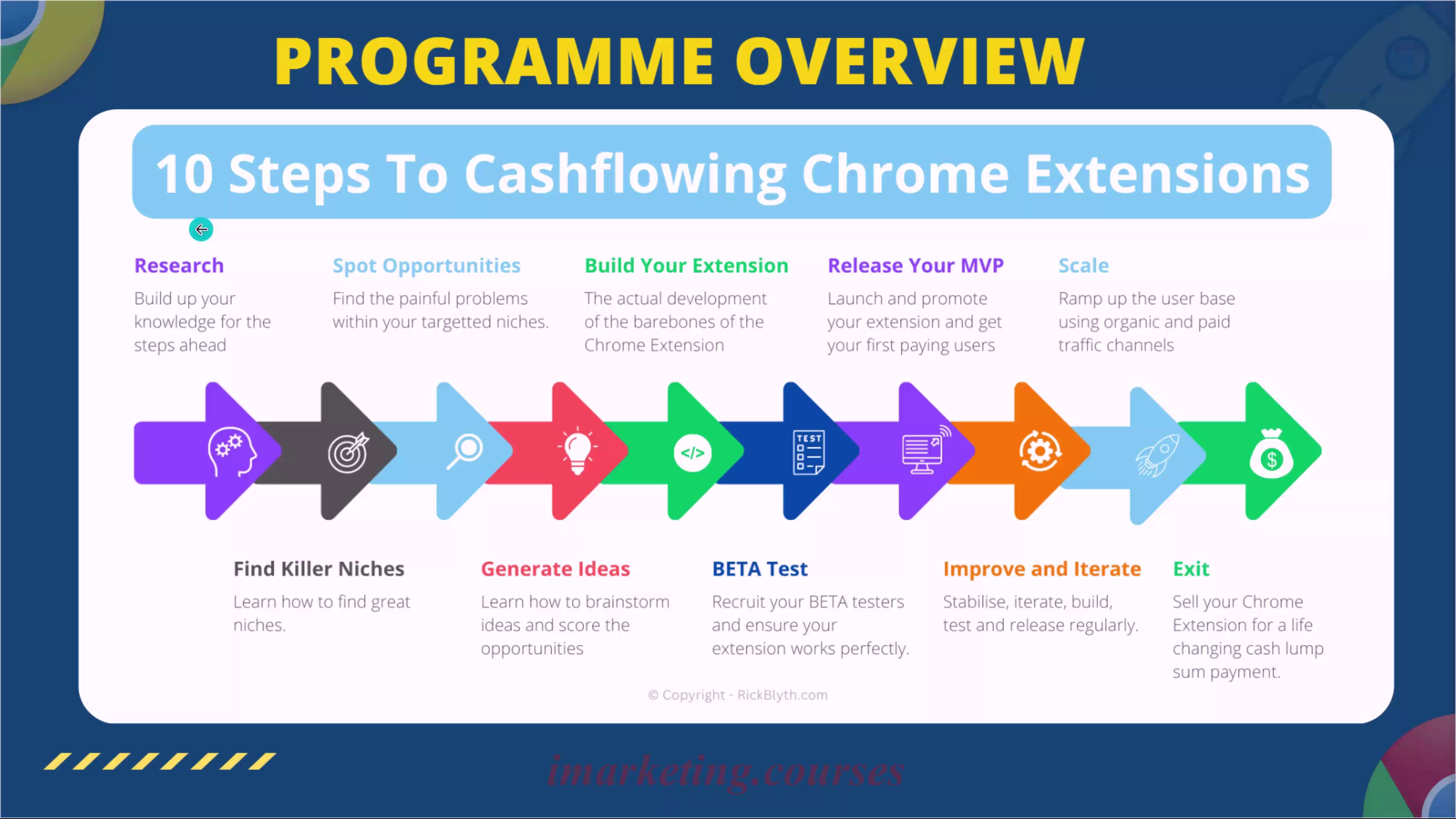
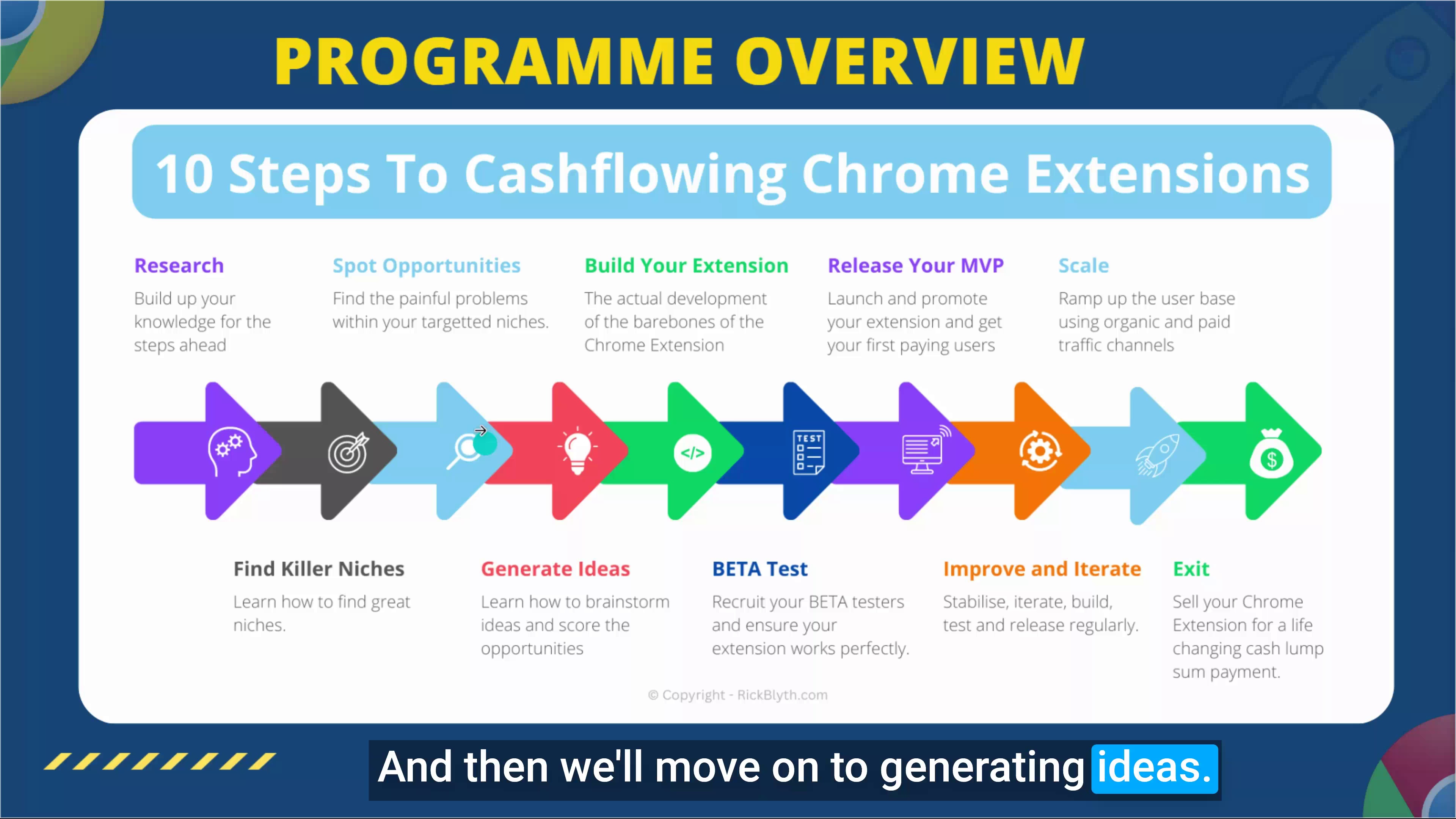
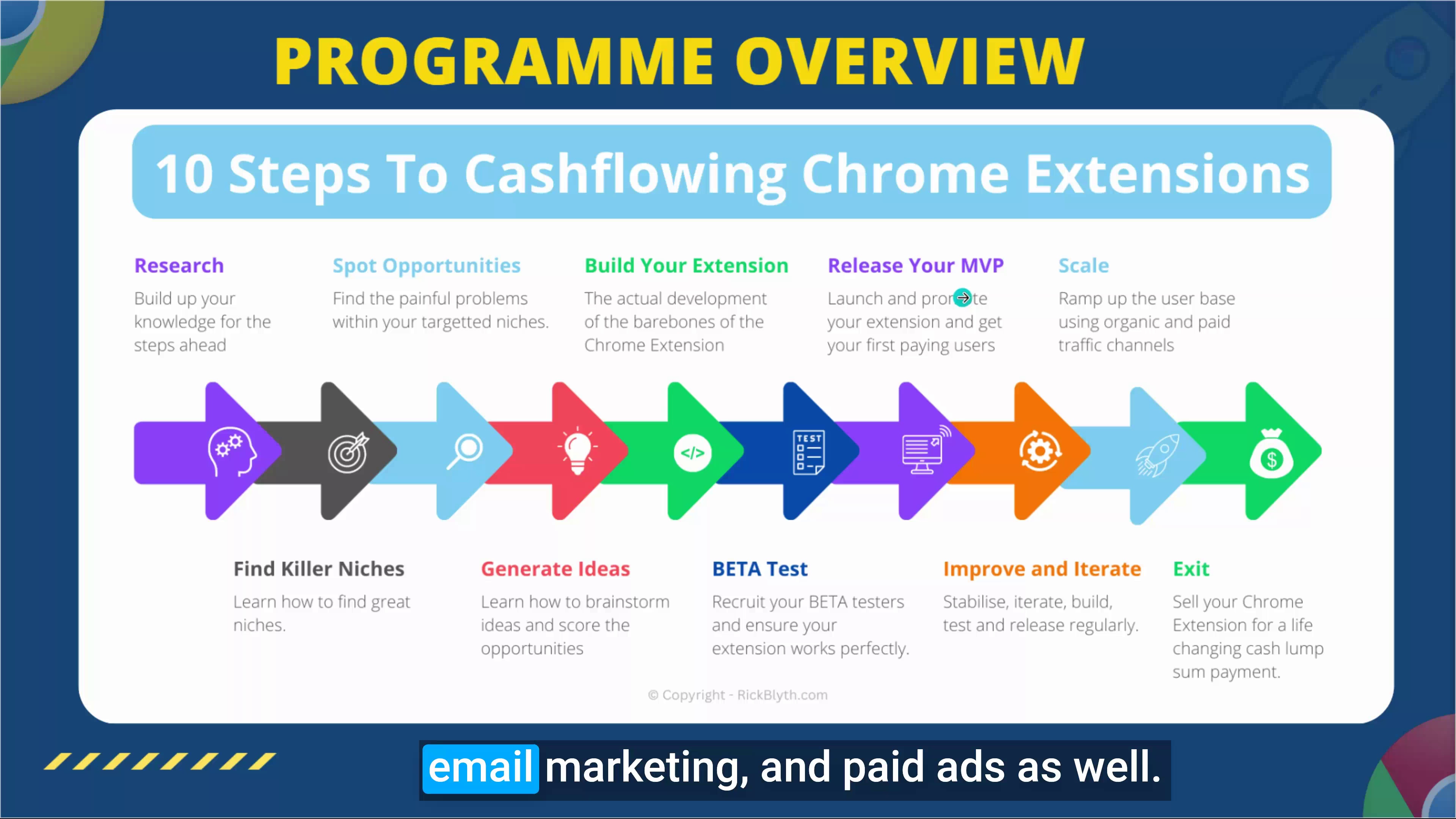
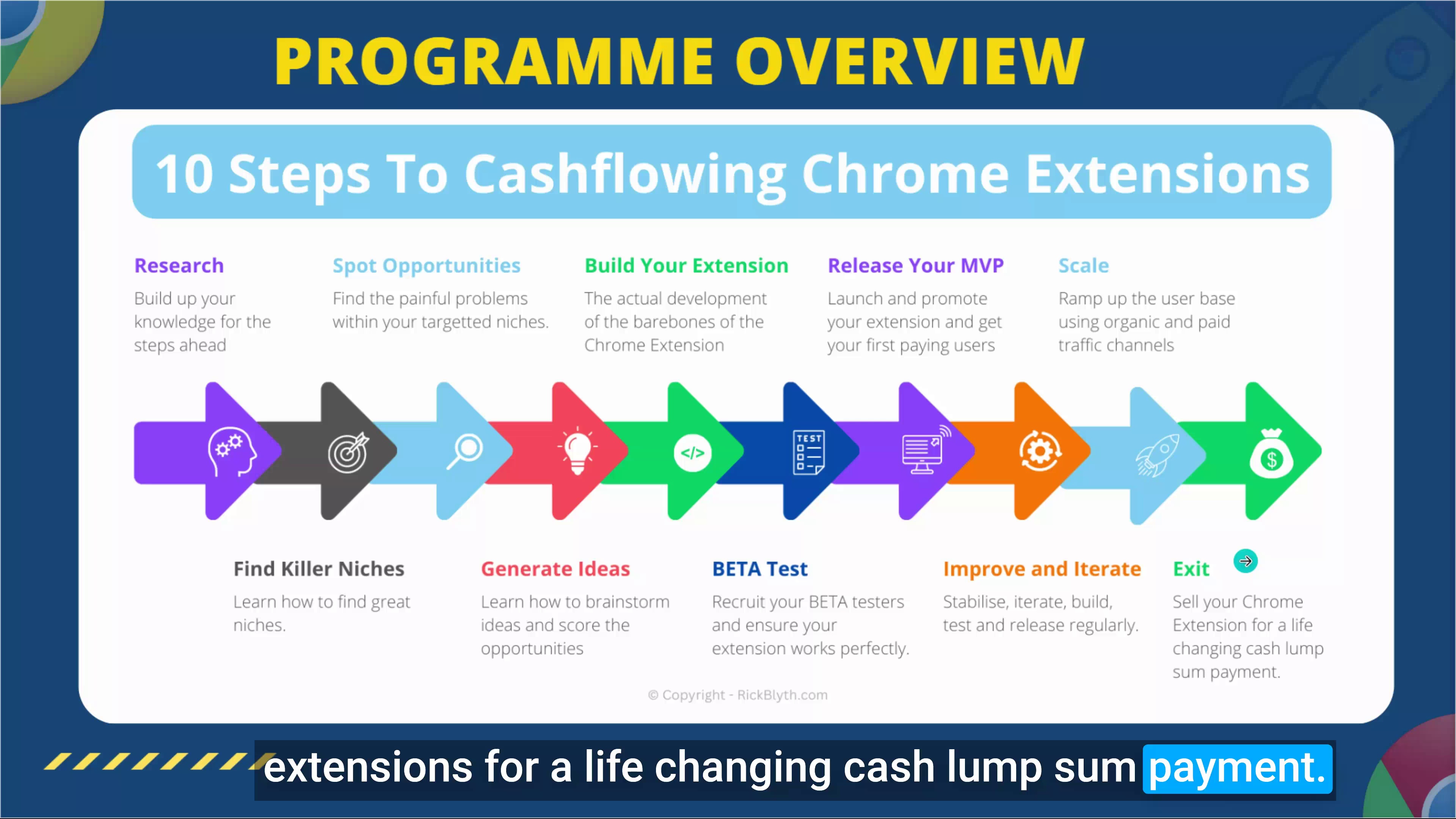
The narrator outlines 10 steps to creating profitable Chrome extensions. The steps are:
1. Research: Learn about Chrome extension features and functionality. 2. Find niches: Identify good niches and explore niche networks. 3. Identify problems: Find issues that Chrome extensions can solve. 4. Generate ideas: Use seven strategies to uncover opportunities. 5. Build MVP: Create a bare-bones version of the extension. 6. Recruit beta testers: Get feedback and refine the product. 7. Release MVP: Launch and promote the extension. 8. Add features and stabilize: Iterate, build, test, and release regularly. 9. Scale up: Grow user base through various promotion methods. 10. Exit or continue: Enjoy passive income or sell the extension.
The narrator emphasizes the importance of not skipping the foundational work in steps 1-4. They advise against jumping straight to building an extension without proper research and idea validation.
As a bonus, the process can be repeated to develop larger Chrome extensions with higher income potential and larger exit targets. The narrator mentions a forthcoming lesson on a 30-day plan to reach the initial MVP stage.
.